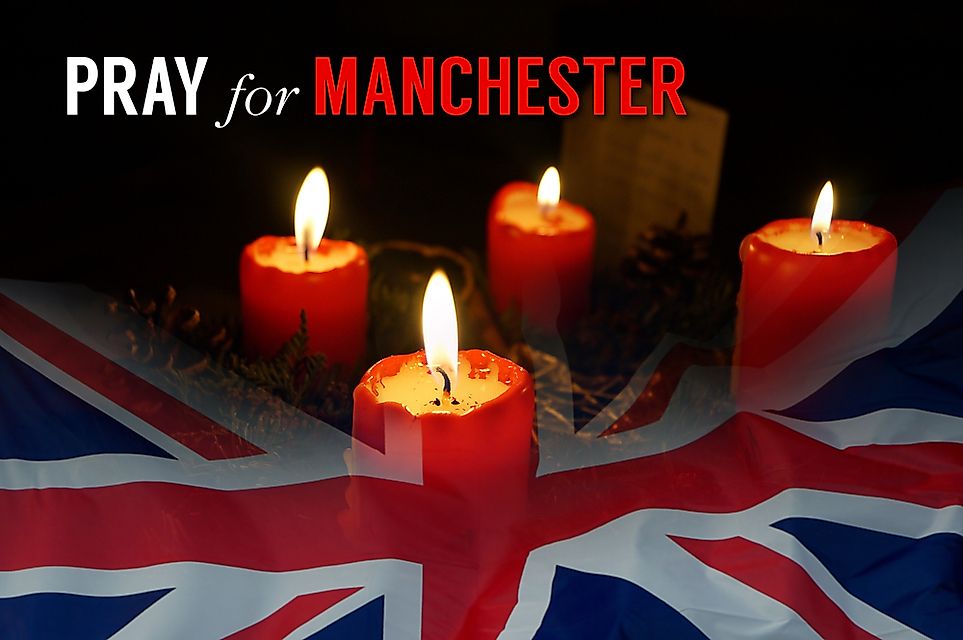The Deadliest Terror Attacks in the United Kingdom in the 21st Century

Terrorism in the United Kingdom
The UK has a long history of acts of terrorism, which dates back to the 17th century. Instances of terror attacks increased significantly during the 1970’s, primarily due to the event known as the Northern Ireland conflict, or "The Troubles." During the 21st century, most terrorist attacks have been attributed to Islamic extremists. Between 1970 and 2016, the UK has experienced 5,227 terror attacks, which have resulted in 3,420 deaths. This article highlights the deadliest of these terror attacks of the 21st century.
Central London Bombings - July 7, 2005
The UK has experienced a number of terror attacks during the 21st century. The deadliest of these was the Central London Bombings, which occurred on July 7, 2005. On this day, London was thrown into panic as public transit passengers were targeted by four Islamic terrorists. The terrorists organized and carried out four suicide bomb attacks on public transportation vehicles during busy morning traffic hours, killing 56 individuals.
Three of the attacks occurred simultaneously on London Underground trains at 8:49 am. Some of the first reports were incorrect due to confusion at the scene. Police originally believed 7 trains had been bombed because passengers from the same trains were exiting through various stations. Additionally, London Underground offices reported that the lines had experienced power surges. By 9:19 am, the confusion was resolved and remaining lines were evacuated.
The fourth attack took place on the Tavistock Square bus, a double-decker en route between Marble Arch and Hackney Wick. The bomb was detonated at 9:47 am, 12 minutes after picking up passengers at Euston bus station, where they evacuated from the tunnels.
Manchester Arena Bombing - May 22, 2017
The UK's second deadliest terror attack of the 21st century took place on May 22, 2017, when a single Islamic terrorist detonated a bomb after an Ariana Grande concert in Manchester Arena. The incident resulted in 23 fatalities and 250 injuries. The attacker was later said to have acted in retaliation against the deaths of Muslim children in Syria caused by American military actions.
The bomb was detonated at 10:31 pm and blew shrapnel throughout the entrance of the arena as concert attendees exited the show. Passengers in Manchester Victoria railway station were also evacuated, and parts of the station were damaged due to the force of the blast. Investigators later confirmed the shrapnel, which consisted of nuts and bolts, reached and killed at least 2 people who were approximately 65 feet away from the blast.
In response to the attack, the government enacted Operation Temperer, which enabled 5,000 military members to serve alongside armed police forces throughout England. Additional troops were sent to protect public administrative buildings. The level of the national threat of terror was increased to its highest level, critical, for four days after the attack.
London Bridge Attack - June 3, 2017
The third deadliest 21st century terror attack experienced in the UK occurred on June 3, 2007, less than one month after the previously mentioned incident at Manchester Arena. This event, referred to as the London Bridge Attack, resulted in 8 deaths and 48 injuries.
Three Islamic terrorists carried out this attack by driving a rental van off the road and into a crowd of pedestrians on the bridge. The attackers subsequently exited the van armed with knives and wearing vests made to look like explosive devices, and ran into nearby business establishments of the Borough Market entertainment district and attacked and stabbed customers. The assailants were killed by the police.
Investigations into the incident revealed that the attackers had originally attempted to rent a much larger, 7.5-ton truck, but were denied due to a lack of payment information. The van was packed with 13 wine bottles filled with flammable material and blowtorches, leading police to suspect that the attackers also planned to wreak havoc with fire bombs. The rented van was later identified on video surveillance as crossing north on the bridge at 9:58 pm. The vehicle then turned around and came back across the bridge, only to turn around and head north again. On the second trip north, the van was steered into the crowd, killing 3 of the 8 victims.
In response to this attack, the City of London advised residents that in the event of a violent threat, people should flee rather than attempt to negotiate with attackers. If fleeing is not an option, the public is instructed to hide, turn their phones to silent, and call the authorities. This announcement is often referred to as the “Run, Hide, Tell” notice and this attack marked the first time the city had used it.
Westminster Attack - March 22, 2017
On March 22, 2017, a few months before the Manchester Arena and London Bridge attacks, the UK experienced its 4th deadliest terror attack of the 21st century. The attack involved a solitary attacker driving a vehicle into a crowd, resulting in four fatalities and more than 50 injuries. The attacker then fled the vehicle towards New Palace Yard, where he killed an unarmed police officer.
One of the pedestrians fell from the bridge into the Thames River below, where she was recovered by a river cruise ship and taken to the hospital before dying. Shortly after, in New Palace Yard, the protection officer for the Ministry of Defence shot and killed the culprit after he killed an unarmed guard. Parliament was suspended for the day and its members and visitors were prevented from leaving the building until the police were sure it was a solitary act.
The police investigation later discovered that the culprit had claimed jihad as the reason behind the attack, indicating he was seeking revenge against military actions occurring in Muslim-dominant countries throughout the Middle East. Since the investigation could not uncover a definitive link to a specific terrorist organization, police classify the attack as an Islamist-related terror attack.











